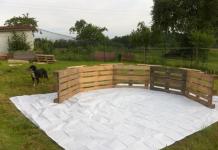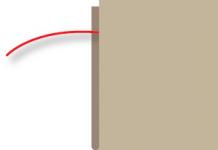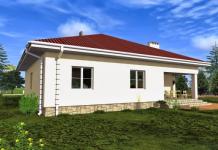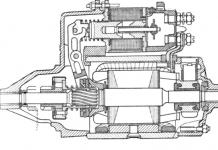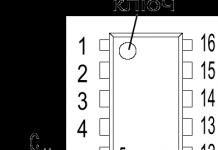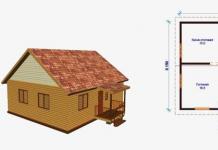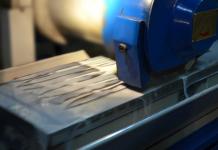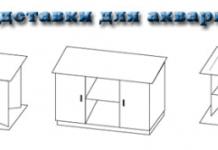is your guide to the world of scale simulation!
BRIEF HISTORICAL SUMMARY
Dassault Rafale (French Dassault Rafale, lit. Flurry) is a fourth-generation French multi-role fighter developed by the French company Dassault Aviation.
He made his first flight on July 4, 1986. Adopted by the French Navy and Air Force in 2004 and 2006, respectively.
In 2009, the French Ministry of Defense ordered an additional 60 fighter jets.
On December 7, 2011, French Defense Minister Gerard Longuet announced that Rafale production would be phased out (after the company completes a paid order for the French Air Force for 180 aircraft) if foreign orders for a fighter do not appear. However, the victory in January 2012 in the Indian MRCA tender for the supply of 126 multi-role fighters for the Indian Air Force allowed for a large export order and possibly saved the aircraft from being phased out. Subsequently, the Indian Defense Minister stated that there were significant problems in the negotiations for the Rafali contract. The main reason for the possible refusal to purchase aircraft is their price, which has more than doubled since 2012. The Indian Ministry of Defense considers Russian Su-30MKIs as a cheap replacement for French aircraft.
According to official data, as of August 2015, the contract for the supply of 126 Rafal multipurpose fighters to India has been completely canceled.
 |
 |
 |
The aircraft is made according to the tailless aerodynamic configuration traditional for Dassault Aviation fighters with an additional high-lying front horizontal tail unit (the so-called canards), a mid-positioned triangular wing with root influxes and two engines in the rear fuselage.
The front rotary horizontal tail is located in front of the wing to increase the maneuverability of the aircraft (maximum operational overload - 9 g). Single-keel. The power plant is twin-engine. Can be operated from a 400 m long runway.
The fighter is equipped with an alarm system, RBE / RBE2 radar (since 2012) FAR / AFAR, the aircraft is equipped with a SPECTRA warning system, it includes: warning about laser exposure, radar exposure, DDM-NG missile attack warning system (since 2012), consisting of 2 passive IR sensors on the keel. The DDM-NG system allows you to get a spherical image in the IR range.
The air intake channels are S-shaped and shield the compressor blades, thereby reducing the EPR of the aircraft.
As of February 2012, the company offers the following versions of the aircraft: Rafale C, Rafale M and Rafale B.
Rafale A
Experimental demonstration.
Rafale B
Double, ground-based.
Rafale C
Single, ground-based.
Rafale D
Original name Rafale C (renamed 1990).
Rafale M
Single, carrier-based.
The first prototype of the Rafale M single-seat multi-purpose carrier-based aircraft, designed by ACM (Avion de Combat Marine), made its first flight on December 12, 1991. The main difference of this modification is the mass of the structure increased by 750 kg, reinforced Messier-Bugatti landing gear. Other differences include 13 hardpoints instead of 14, and a 2,000 kg reduction in maximum takeoff weight (19,500 kg). Rafale M Standart F1 modification entered service in December 2000 and reached full combat readiness in 2004.Since mid-2006, aircraft of the Standard F2 modification began to enter service with the French Navy. They, like the French Air Force vehicles, were used during Operation Enduring Freedom in Afghanistan.
Rafale N
Double, carrier-based.
Rafale BM
Original name Rafale N.
 |
 |
 |
| Aircraft France Rafale M: 80319: 1/48: Hobby Boss: French Air Force 4th Generation Fighter |
Specifications
Crew: 1-2 people
Length: 15.30 m Wingspan: 10.90 m
Height: 5.30 m
Wing area: 45.7 m²
Empty weight: 10,000 kg
Normal takeoff weight: 14,710 kg
Maximum takeoff weight: 24,500 kg
Payload weight: 9500 kg
Weight of fuel in internal tanks 4700 kg Weight of fuel in PTB: 6700 kg
Engine: 2 × double-circuit turbojet with afterburner SNECMA M88-2-E4
engine dry weight: 897 kg
maximum thrust: 2×5100 kgf
afterburner thrust: 2 × 7500 kgf
gas temperature in front of the turbine: +1577 °C (1850 K)
Flight characteristics
Maximum speed at high altitude: ~ 1900 km/h (M=1.8)
Combat radius: 1800 km
Combat radius: 1093 km in the version of the fighter-interceptor
Practical ceiling: 15,240 m
Rate of climb: >305 m/s (18,300 m/min)
Wing loading: 326 kg/m²
Thrust-to-weight ratio: 1.03
Maximum operational overload: -3.2 / +9.0 g
Armament
Cannon: 1 × 30 mm Nexter DEFA 791B (rate of fire 2500 rounds / min), ammunition - 125 rounds of the OPIT type (armor-piercing incendiary tracer) with a bottom fuse.
Missiles:
air-to-air: MICA, AIM-9, AIM-120, AIM-132, MBDA Meteor, Mazhik II
air-to-surface: nuclear warhead ASMP, Apache, AM.39, Storm Shadow, AASM
Engine
The first Rafales were tested on F404 engines, then the development of their own M88-2 engine was started in 1987 and cost about 8.5 billion francs or about 1.5 billion euros. Serially produced since 1996. The M88 engine belongs to the 5th generation of engines. Design requirements for the 5th generation include stages: 3 HPC, 5-6 HPC, 1 HPT, 1 LPT, counter-rotation of the rotors.engine's type
twin-shaft bypass turbojet engine with afterburner, consists of a 3-stage LPC, blades made of titanium alloys, 6-stage high-pressure compressor, ceramic-coated annular combustion chamber, gas temperature before the turbine +1580 °C, high-pressure turbines (single-stage) , single-stage low-pressure turbine, afterburner, nozzle. FADEC control system. The box of units is located below. Powder-cast monocrystalline turbine blades and disks.
Forced thrust: 7440 kgf
Specific fuel consumption
Without afterburner: 0.875 kg per kgf per hour
Afterburner: 1.75 kg per kgf per hour
Outer Diameter: 0.78m
Length: 3.5m
Weight: 880 kg
 |
 |
 |
| Aircraft France Rafale M: 80319: 1/48: Hobby Boss: French Air Force 4th Generation Fighter |
On January 31, 2012, it became known that Dassault Aviation won the Indian MRCA tender for the supply of 126 multifunctional fighters. According to one report, a contract worth about $10.4 billion will be signed with Dassault Aviation. According to other sources, the total cost of the contract, including training and maintenance, could reach $15 billion. In accordance with the initial requirements of the MRCA tender, its winner must deliver 18 fighters to ready-made, and the remaining 108 units will be manufactured under license at the facilities of Hindustan Aeronautics after the transfer of relevant technologies. At the same time, the tender provided for an option to purchase another 64 aircraft. According to the terms of the tender, the winner will subsequently have to reinvest in the Indian industry 50% of the contract value.
It was expected that deliveries of fighters would begin in mid-2015, and aircraft manufactured under license at the enterprises of the Indian company Hindustan Aeronautics - in 2017-2018.
However, in early August 2015, information appeared that this contract was cancelled. The reason is that the parties could not agree on the transfer of aircraft production technologies. Moreover, compared to 2012, the price of finished aircraft has almost doubled.
WHAT'S INSIDE THE BOX?
A set of plastic parts for assembling 1 model.
Length 32 cm, wingspan 23 cm.
A total of 162 parts on 8 sprues.
Worked surfaces with design features, internal paneling, riveting.
Detailed cockpit with instrument panels, controls, buildable ejection seats, canopy open or closed.
Well-designed air intakes, nozzles.
Detailed chassis, detailed niches and landing gear doors.
Movable elevators.
Detailed colorful decal with detailed technical equipment for both the aircraft and the armament of the French Navy.
ASSEMBLY INSTRUCTIONS
 |
 |
 |
 |
 |
| Assembly and painting instructions |
CONTENTS OF THE BOX
 |
 |
 |
 |
 |
 |
 |
 |
| Aircraft France Rafale M:80319: 1/48: Hobby Boss: Full contents of the box |
PHOTO CLICKABLE
CLOSE-UP DETAILS
 |
 |
 |
 |
 |
 |
| Aircraft France Rafale M:80319: 1/48: Hobby Boss: Close-up details |
CONCLUSIONS:
This model is a representative of sets with good casting quality. There is no hint of flash, blurring of the line and any other troubles. Glazing plastic is crystal clear, gives excellent transparency after installation on the model.
A great addition to the set is a large selection of weapons. Pleasantly pleased with the released mechanization of the wing. One omission may be a poor, at first glance, decal. Although it is quite enough to build a beautiful model.
RATING: 4
The rating for this set is a solid four. Model without any frills, but nevertheless has good detailing. She will be a great buy because. corresponds to the price / quality ratio.
However, along with the guarantee disputes deliberately thrown into the press, there were obviously conflicts over the transfer of technology and, probably, primarily price. According to pessimistic estimates, the cost of the required number of Rafales exceeded the $10.4 billion included in the tender by at least twice. This already entailed internal political problems: signing such a contract in a country regularly shaken by corruption scandals is political suicide, especially before elections. Parliamentary elections were held in India in April-May 2014.
Theoretically, the supporters of the contract had time until mid-February, when a moratorium came on the conclusion of new deals in the field of military-technical cooperation, but in late 2013 it became clear that the ruling Indian National Congress (INC) was not eager to give a trump card to opponents. It seemed that providence itself was against Rafael - on October 2, 2013, a key negotiator from the Indian side, Vrun Kumar Bal, assistant minister of defense for aircraft procurement, died of a heart attack.
The hopes that, having received a credit of trust in case of victory, the INC would be able to push through the most difficult decision in the context of the sequestration of the defense budget did not materialize - the oppositional nationalist Indian People's Party came to power, which was very skeptical about the purchase of Raphaels
After the change of government, the program was subjected to the most severe criticism. So, on December 30, 2014, the new Minister of Defense, Manohar Parrikar, said that the French side was extremely uncompromising in the negotiations, refusing to fulfill the promises made during the competition. For the first time, an official of this level publicly admitted the refusal to buy the Rafale. According to Parrikar, India would do well to purchase an additional batch of already mastered Su-30MKIs. It is worth noting that the price of the Su-30MKI produced by HAL is about half that of the estimated cost of the Rafael.
However, Dassault does not appear to have succumbed to the increased pressure. The first export successes of the Rafal undoubtedly gave the French confidence in the negotiations. In February 2015, Egypt unexpectedly signed a contract for the purchase of 24 fighters. At the end of April, many years of negotiations with Qatar ended - the emirate also bought 24 cars with an option for another 12. In total, this ensured the loading of the plant for at least an additional three to four years (the last years in order to stretch production until Rafail export contracts for France were produced with a minimum volume of 11 pieces per year), and the threat of curtailing production was delayed.
Difficult negotiations seemed to weigh heavily on both sides, and the mutual desire to put an end to them led to a striking outcome of the MMRCA.
Non-Solomonic solution
In April, India's new Prime Minister Narendra Modi paid a visit to France. On April 10, the local press published sensational news: an agreement was reached on the direct purchase of the first batch of French-assembled Rafales - and not 18, as planned under the terms of the MMRCA, but 36. The cost was estimated at about 4 billion euros. The increase in direct purchases immediately raised questions about the future of licensed assembly in India.
Fears were confirmed - on May 21, Parrikar said that India would limit itself to purchasing only 36 Rafales and would not organize a licensed assembly. The saved funds (90 "Rafales" the Minister of Defense estimated at $ 15.5 billion) will be directed to other programs. Applicants for the released money, from the point of view of specialists, can be called the same Su-30MKI program, under which India can order another 40-60 aircraft in addition to the existing ones, the Tejas national project and the joint Russian-Indian development of the fifth fighter generation FGFA based on the Russian project T-50 PAK FA. At the same time, the official New Delhi, represented by the same Manohar Parrikar, said that the national project would be the main recipient, but the Teja itself is currently a frankly crude aircraft with unclear prospects, including due to the critically prolonged (already more thirty years) development period ....
Dassault Rafale (Russian "Dassault Rafale") is a fourth-generation French multirole fighter developed by the French company Dassault Aviation. He made his first flight on July 4, 1986. Adopted by the French Navy and Air Force in 2004 and 2006, respectively.
In 2009, the French Ministry of Defense ordered an additional 60 fighter jets. Participates in tenders for the supply of fighter aircraft to the United Arab Emirates and Brazil.
The Dassault Rafale aircraft is one of the priorities for the development of the French aerospace industry. This is a completely French project - weapons, engines, avionics and own production. The Rafale is the last aircraft to date built by a European country without US or any other foreign assistance.
History of creation and application
The development of the aircraft was started by Dasso-Breguet in 1983, two years before the official withdrawal of France from the program to create a promising European FEFA fighter, later called the Eurofighter 2000. Like the Eurofighter, the Rafale aircraft is designed to be used as an interceptor and strike a fighter-bomber capable of performing air defense and air superiority missions, as well as attacking ground targets.
The first flight of the Rafale A experimental fighter took place in July 1986. The first experimental aircraft in the version of a single-seat fighter-interceptor Rafale C took off in May 1991, and the first experimental carrier-based aircraft designed to arm French aircraft carriers, the Rafale M, took off in December 1991. Serial production plans provide for the delivery of 235 and 86 aircraft to the French Air Force and Navy, respectively.

The first combat use took place in March 2007 during the NATO operation in Afghanistan. Also, these aircraft were used in the operation of the NATO military bloc against Gaddafi's troops in Libya, starting in March 2011.
On December 7, 2011, French Defense Minister Gerard Longuet announced that Rafale production would be phased out (after the company completes a paid order for the French Air Force for 180 aircraft) if foreign orders for a fighter do not appear. However, in January 2012, the victory in the MRCA tender for the supply of 126 multi-role fighters for the Indian Air Force secured a large export order and saved the aircraft from being discontinued.
Modifications
Rafale A: Rafale prototype. It was slightly larger and heavier than the Rafale C/M and was powered by two 6,800 kg (16,000 lb) F404-GE-400 engines from which the M88 engine was developed.
Rafale B: prototype, ordered as a two-seat trainer version of the Rafale C, but retaining all functionality.
Rafale C: two prototypes ordered as single-seat multi-role combat aircraft. The first aircraft, ordered in April 1988, flew in February 1991. Originally designated Rafale D, the French term for stealth aircraft, it was renamed Rafale C in 1990. The French Air Force requested 250 aircraft in single and double versions.
Rafale M: two prototypes ordered for the French Navy as a carrier-based single-seat multipurpose aircraft with the designation Rafale M. Similar to the Rafale C, but equipped with a landing hook and a modified variable length nose strut. The Navy requested 86 vehicles.

Armament
Cannon:
1x30 mm Nexter DEFA 791B (rate of fire 2500 rounds / min), ammunition - 125 rounds of OPIT type (armor-piercing incendiary tracer) with a bottom fuse.
Rocket:
"air-to-air": MICA , AIM-9 , AIM-120 , AIM-132 , MBDA Meteor, "Mazhik" II.
air-to-surface: nuclear warhead ASMP, Apache, AM.39, Storm Shadow, AASM.
| LTH: |
| Modification | Rafale M |
| Wingspan, m | 10.8 0 |
| Aircraft length, m | 15.27 |
| Aircraft height, m | 5.34 |
| Wing area, m2 | 45 .7 0 |
| Weight, kg | |
| empty curb | 10460 |
| normal takeoff | 18500 |
| maximum takeoff | 22500 |
| Fuel, kg | |
| internal | 4500 |
| PTB | 7500 (1 x 3000 + 2 x 2000 l and/or 2 2 x 1300 l) |
| Engine | 2 turbofans SNECMA M88-2 |
| Maximum thrust, kN | |
| nominal | 2 x 73.23 |
| afterburner | 2 x 92.90 |
| Maximum speed, km/h: | |
| near the ground | 1350 |
| on high | 1900 |
| Practical range without PTB, km | 2000 |
| Combat radius, km | |
| as a strike aircraft | 1055 |
| as an interceptor | 1760 |
| Max. rate of climb, m/min | 19800 |
| Practical ceiling, m | 16765 |
| Max. operating overload | 9 |
| Crew, people | 1-2 |
The latest best military aircraft of the Air Force of Russia and the world photos, pictures, videos about the value of a fighter aircraft as a combat weapon capable of providing "air supremacy" was recognized by the military circles of all states by the spring of 1916. This required the creation of a special combat aircraft that surpasses all others in terms of speed, maneuverability, altitude and the use of offensive small arms. In November 1915, Nieuport II Webe biplanes arrived at the front. This is the first aircraft built in France, which was intended for air combat.
The most modern domestic military aircraft in Russia and the world owe their appearance to the popularization and development of aviation in Russia, which was facilitated by the flights of Russian pilots M. Efimov, N. Popov, G. Alekhnovich, A. Shiukov, B. Rossiysky, S. Utochkin. The first domestic machines of designers J. Gakkel, I. Sikorsky, D. Grigorovich, V. Slesarev, I. Steglau began to appear. In 1913, the heavy aircraft "Russian Knight" made its first flight. But one cannot fail to recall the first aircraft creator in the world - Captain 1st Rank Alexander Fedorovich Mozhaisky.
Soviet military aircraft of the USSR of the Great Patriotic War sought to hit the enemy troops, his communications and other objects in the rear with air strikes, which led to the creation of bomber aircraft capable of carrying a large bomb load over considerable distances. The variety of combat missions for bombing enemy forces in the tactical and operational depth of the fronts led to the understanding of the fact that their performance should be commensurate with the tactical and technical capabilities of a particular aircraft. Therefore, the design teams had to resolve the issue of specialization of bomber aircraft, which led to the emergence of several classes of these machines.
Types and classification, the latest models of military aircraft in Russia and the world. It was obvious that it would take time to create a specialized fighter aircraft, so the first step in this direction was to try to equip existing aircraft with small arms offensive weapons. Mobile machine-gun mounts, which began to equip the aircraft, required excessive efforts from the pilots, since the control of the machine in a maneuverable battle and the simultaneous firing of an unstable weapon reduced the effectiveness of fire. The use of a two-seat aircraft as a fighter, where one of the crew members played the role of a gunner, also created certain problems, because an increase in the weight and drag of the machine led to a decrease in its flight qualities.
What are the planes. In our years, aviation has made a big qualitative leap, expressed in a significant increase in flight speed. This was facilitated by progress in the field of aerodynamics, the creation of new more powerful engines, structural materials, and electronic equipment. computerization of calculation methods, etc. Supersonic speeds have become the main modes of fighter flight. However, the race for speed also had its negative sides - the takeoff and landing characteristics and the maneuverability of aircraft deteriorated sharply. During these years, the level of aircraft construction reached such a level that it was possible to start creating aircraft with a variable sweep wing.
In order to further increase the flight speeds of jet fighters exceeding the speed of sound, Russian combat aircraft required an increase in their power-to-weight ratio, an increase in the specific characteristics of turbojet engines, and also an improvement in the aerodynamic shape of the aircraft. For this purpose, engines with an axial compressor were developed, which had smaller frontal dimensions, higher efficiency and better weight characteristics. For a significant increase in thrust, and hence the flight speed, afterburners were introduced into the engine design. The improvement of the aerodynamic forms of aircraft consisted in the use of wings and empennage with large sweep angles (in the transition to thin delta wings), as well as supersonic air intakes.
A few decades ago, many countries, including those that did not have a developed aviation industry (Argentina, Egypt, Poland, Switzerland, etc.), were working on creating their own jet fighters and fighter-bombers. They were motivated to do this not so much by the military-political situation as by considerations of national prestige, as well as the desire to develop the most science-intensive branch of engineering - military aircraft construction, capable of becoming a "locomotive" for other areas of industry. However, the increasing complexity and cost of fighters (which became especially noticeable during the transition from the second to the third generation of jet combat aircraft) led to the disappearance of most applicants for membership in the "fighter club".
Today, only Russia, the USA and France are among the "full-fledged" manufacturers of fighters capable of creating combat aviation systems relying only on their own forces. The latest creation of the French aerospace industry - the Dassault Rafal multipurpose fighter - will allow the country that created it to remain in the ranks of the aviation "superpowers", at least until the mid-2010s. Graceful, with its outlines reminiscent of a pointed Gothic temple directed to the sky, Rafal has already become a symbol of the French aircraft industry, replacing the Mirage family in this role.
By the beginning of the 1980s, the French Air Force had a completely modern fourth-generation fighter Dassault Mirage-2000, which had significant modernization potential. However, the rapid progress in the field of combat aviation, the deployment in the USSR and the USA of work on fundamentally new fifth-generation fighters, which were supposed to be put into service as early as the mid-1990s, required an adequate response from the French aviation industry, which is striving to retain the title of "legislator mod" in the field of military aviation.
In May 1993, at the Paris Air Show, information was first presented about the Dassault-Breguet ACX project (Avion de Combat Experimental - combat experimental aircraft), developed by order of the French Ministry of Defense.
"Ideologically" the project combined the best properties of the Mirage-2000 (high maneuverability at "supersonic") and F / A-18 (good performance at subsonic speed, large maximum permissible angles of attack). The concept of the new fighter was based on the achievement of high maneuverability both at supersonic and subsonic speeds. The aircraft was made according to the "tailless" aerodynamic configuration with a PGO close to the delta wing, a single-fin vertical tail unit and a cockpit canopy providing improved visibility. Unregulated "semi-tunnel" type air intakes ensured stable operation of the engines at high angles of attack. The aircraft had a statically unstable configuration, which led to the use of a digital EDSU. The design of the airframe provided for the widespread use of composite materials. A novelty was the use of the EVA (Equipement Vocal pour Aeronef) speech control and information system, which reduces the burden on the pilot in air combat. In particular, with the help of the EVA system, the operating modes of the BRAS and cockpit displays, weapons, communication frequencies, etc., were to be selected, as well as information about the remaining fuel, distance to the airfield, etc.). To inform the pilot, it was supposed to use a voice synthesizer.
However, the high cost of R&D to create a fundamentally new fighter pushed the French government to find ways to cooperate with other European countries. At the stage of formation of the appearance of the aircraft, France entered as one of the partners in the program of a single European ("NATO") EFA fighter (which later became the EF2000). But in 1985, after disagreements with other project participants - mainly Great Britain - came to light, the French government made a bold decision to withdraw from the EFA program and create its own new generation combat aircraft, called ACE (Avoin de Combat Europeen - European Combat Aircraft). An attempt to internationalize this program failed (the only partner - Belgium - soon left the alliance), and later the aircraft turned from European into purely French, receiving the name Rafal ("Squall").
The Rafal was supposed to enter service in 1996. Initially, it was planned to build an experimental (experimental-demonstration) Rafal-A aircraft, and then on its basis to create a full-fledged Rafal-B fighter that meets the requirements for an ACT tactical combat aircraft of the Air Force and an ACM carrier-based fighter for the Navy.
On July 4, 1986, the Rafal-A (F-ZJRE) aircraft, equipped with two American General Electric F404 engines, made its first flight at the Istres flight test center, on which aerodynamic and structural solutions were tested, which were supposed to be used on a serial machine. After 460 test flights, one of the Rafal-A engines was replaced by the promising French SNECMA M88 turbofan. The first flight of a flight demonstration aircraft with a new engine took place on February 27, 1990. In total, Rafal-A made 865 flights, the last time taking off on January 24, 1994. On April 21, 1988, it was decided to build an experimental Rafal aircraft in a "combat" configuration. The version of this aircraft, intended for the Air Force, received the designation Rafal-C. May 19, 1991 Rafal-C (C01 / F-ZWVR) first took to the air. On December 12, the first flight of the prototype carrier-based fighter Rafal-M F-ZWVM took place. A large amount of aerodynamic testing was performed on this machine. In July-August 1992, the Rafal-M was tested in the USA, at the Patuxent River Air Force Center, where they practiced taking off from a ship's catapult and landing using an arrester (such ground-based bench equipment is currently available only in the USA and in Ukraine in the city of Saki ). On April 19, the carrier-based Rafal landed for the first time on the deck of the aircraft carrier Foch, cruising off the American coast (in the waters of the US Navy Lakehurst, New Jersey), and the next day, the first takeoff from the deck using a catapult. In November-December, this machine is sent to the United States for the third time to continue testing at the American Naval Aviation Center. The fourth "American cruise" (October-December 1995) allowed the Rafal-M to work out take-off from a catapult with a maximum take-off weight of 22,300 kg. On June 8, 1995, this vehicle fired the first MICA air-to-air missile at a real aerial target. On November 8, 1993, tests began on the second Rafal-M (M02) aircraft, equipped with a full set of marine navigation equipment. It also worked out the electromagnetic compatibility of avionics, and also launched Magic-2 short-range air-to-air missiles against "real maneuvering targets. The prototype of the two-seat UBS Rafal-B B01 / F-ZWVS made its first flight on April 30, 1993. He became the first aircraft equipped with a prototype RBE2 radar (the first flight with a "dummy" radar installed on board took place on July 7, 1993), as well as a defensive electronic warfare subsystem. "Spectra". In November 1995, this machine performed a non-stop flight from the French Istres flight test center in Dubai with a length of 5600 km and a duration of 6.5 hours with three aerial refueling (including one "for precautionary purposes"). The RBE2 radar, which was commissioned by the Topson/CSF and Dassault Electronics consortium in November 1989, first flew on a Phalcon-20 flying laboratory in July 1992. On December 23, 1992, the French government made an official decision on the purchase of serial Rafal aircraft, and on December 31 of the same year, on the purchase of M88-2 turbofans for them. Initially, two-seat RafalВ aircraft were considered only as conventional UBS with dual control (the mass of the aircraft exceeded the mass of a single-seat fighter by 350 kg, and the cost was 3-5% higher than the cost of a single-seat aircraft), but later it was decided to use the two-seat version as a full-fledged combat aircraft with operator in the rear cab. The French fleet, which is armed with obsolete fighters and fighter-bombers of the second generation Super Etendard and F-8 Crusader, is most interested in the new fighter. The French nuclear multi-purpose aircraft carrier "Charles de Gaulle", which is to be commissioned in 1999, in the period 2000-2002. it is planned to equip 12 carrier-based Rafal-M fighters of the first production batch. These aircraft (Block F1 avionics standard) will only be capable of operating against air targets. Their strike potential is limited to conventional free-fall bombs and containers with unguided aircraft missiles. Rafal-M Block F1 will reach initial combat readiness in 2001 (then the fleet will already have six serial fighters). In 2002, they will replace the 11 American-made Vought F-8P Cruseders from Squadron 12F, which entered service with the French Navy in the early 1960s. Rafal-M Block F1 fighters will be equipped with MICA medium-range air-to-air missiles with an active radar homing system (maximum launch range up to 80 km) and highly maneuverable Magic-2 short-range air combat missiles with a thermal homing head. In the course of further refinement to the Block F1.1 standard, which is expected to begin in 2002 (almost immediately after the combat squadron enters service), these aircraft will receive Link 16 telecode communication equipment, integrating them into a NATO-wide automated information exchange system (a kind of "Internet "with control functions) JTIDS, as well as a version of the MICA rocket with TGS, which has significantly higher performance than the Magic-2. This will expand the capabilities of the aircraft when operating on air targets. In particular, it will become possible to attack an enemy aircraft in a covert passive mode, without the use of radar. In 2005-2012 The French Navy will be replenished with 48 Rafal-M fighters of the second production batch (Block 2), capable of operating on ground and surface targets with high-precision weapons. These aircraft will replace 30 Dassault Super Etendard carrier-based fighter-bombers in service with two squadrons. The flight of the first Rafal-M aircraft of the Block F2 standard is to take place in 2004. To destroy ground targets, the aircraft is supposed to be equipped with the Matra / BAe Dynamics SCALP / EG tactical cruise missile with a range of up to 250 km, which is the development of the Matra Apache KR, as well as the AASM (Armament Air-Sol Modulaire) advanced modular high-precision cluster weapon. In 2007, deliveries and refinement of previously released fighters to the Block F3 standard will begin, allowing the Rafal-M aircraft to carry the ASMP nuclear cruise missile, as well as the promising ASM supersonic anti-ship missile (similar to the Russian Kh-30), which is currently under development. In the future, in the early 2010s, all aircraft will be brought up to the Block F4 standard, which fully meets the requirements of the French Navy. Three squadrons of Rafal-M fighters are to be based in Brittany, in northern France. Linked by Link 16 (JTIDS) equipment to the automated control system of the Charles de Gaulle aircraft carrier and the NATO air defense system on the European theater of operations, they must solve combat missions both from the aircraft carrier and flying from coastal airfields. Fighters of this type are supposed to be assigned the main tasks of the air defense of the fleet, fighting for air supremacy, air patrolling, delivering nuclear strikes, protecting their troops from enemy air strikes, as well as air reconnaissance tasks. E-2С Hawkeye (Group II) carrier-based AWACS aircraft should also interact with Rafal-M aircraft. The contract for the purchase of two aircraft of this type was concluded with the United States in 1995. Deliveries of Rafal-C and Rafal-B aircraft to the French Air Force will begin no earlier than 2003, and the first squadron of the Air Force will be fully equipped with these fighters (22 aircraft) only in 2005. Initial, very optimistic plans called for the purchase of 250 Rafal aircraft (225 in variant C and 25 in variant B) for the French Air Force and 86 Rafal-M for the fleet. The potential volume of fighters of this type on the international market was estimated at 500 units. However, in 1996, these plans were revised due to new economic realities. The Air Force has reduced its "appetites" to 234 aircraft (including 139 in the Rafal-B variant), and the Navy to 60. It is assumed that by 2015 the "first line" of the French Air Force will have 140 Rafal fighters. Deliveries are scheduled to be completed in 2019. It is assumed that the multi-role fighters of the Rafal family will completely replace the Crusader F-8P, Super Etendard, Mirage-F1ST and Jaguar aircraft, as well as, in part, the early Mirage-2000. Thus, by 2015, only two types of combat aircraft (Rafal and Mirage-2000) will remain in the French armed forces compared to the six types currently in service. There is an opinion that one of the indirect reasons for the delay in the purchase of Rafal fighters is the presence in the French Air Force of relatively new modernized fourth-generation Mirage-2000-5 and Mirage-2000D aircraft. As one of the prominent figures of the French defense industry stated, "if we exclude the need to replace the obsolete carrier-based Crusader and Super Etendard aircraft, they (that is, the armed forces) are especially in no hurry to acquire a new fighter." According to industry experts, the slowdown in the implementation of the Rafal program will negatively affect the export potential of this aircraft (Rafal already lost the competition in the United Arab Emirates in 1998 to the American Lockheed-Martin F-16С Block 60 fighter). According to French aviation experts from the Ministry of Defense, "the Rafal aircraft has a real superiority over other fighters of this class. It is capable of carrying a combat load of up to 8000 kg, which is significantly more than that of the SAAB Gripen aircraft. It is more versatile than the EF2000 fighter, has less radar visibility and more advanced electronic equipment than the F-16C Block 50 / 52. The capabilities of the F-16C Block 60 aircraft are still completely unknown, but they are unlikely to be able to compare with the corresponding capabilities of a completely new aircraft, and the F-22 fighter, if exported it will be allowed, belongs to a different class of aircraft and is not a direct competitor to the new French fighter." Such a high rating of the Rafal aircraft is quite justified. To do this, you should compare it in more detail with its closest competitors that are in the same "weight category" with multi-role fighters of the most massive "medium" class Eurofighter Typhoon EF2000, Boeing F / A-18E Super Hornet, MiG-29M and MiG-29K, created in 1990s. The Rafal and Eurofighter are made according to the "tailless" scheme, which, compared to the normal aerodynamic scheme (Super Hornet and MiG-29M), provides some advantage in air combat maneuverability (in particular, a higher instantaneous turn speed, which allows you to quickly take a position for use of weapons). The EF2000 has a slightly lower specific wing load than the Rafal (at takeoff weight in the configuration of air superiority aircraft) and a slightly higher thrust-to-weight ratio, which theoretically provides it with superiority in maneuverable air combat. The specific characteristics of the Rafal and MiG-29M aircraft are approximately equal. However, the French machine significantly outperforms the heavier American F / A-18E fighter in terms of thrust-to-weight ratio, which is more focused on ground operations than air targets. In terms of weight return (0.37), the Rafal significantly outperforms its rivals EF2000, F/A-18 and MiG-29M (0.31, 0.28 and 0.20). In terms of speed and altitude characteristics, the Rafal surpasses the F / A-18E aircraft, is practically equal to the Eurofighter and is inferior to the MiG. An important advantage of the Rafal fighter is its large combat load, in terms of which it surpasses all fighters in its "weight category", except for the Super Hornet. Rafal can carry up to ten air-to-air missiles, while the "arsenals" of its rivals are limited to six to eight missiles. The total number of external suspension units for the French car is 14, for the EF2000-13, for the E / F-18E-11 and for the MiG-29M-9. In its final form (Block F3), Rafal will carry a variety of both tactical and "Euro-strategic" high-altitude strike weapons (ASMP missiles with nuclear warheads, tactical missiles, short-range air-to-surface missiles, anti-ship missiles, KAB), in terms of their mass and nomenclature approximately equal to the weapons of the "Super Hornit", somewhat superior to the weapons of the MiG-29M and significantly superior to the weapons of the EF2000. The well-deserved pride of the French industry is the phased array airborne radar, which is more advanced than the radars of other "medium" fighters, which have antennas with electronic scanning in elevation and mechanical - in azimuth. The presence of an optoelectronic radar system provides the Rafal with advantages over the F / A-18E, as well as over the German and Spanish modifications of the EF2000. Another source of French pride is the cockpit instrumentation of their fighter. Rafal is equipped with a complex of liquid crystal multifunctional color indicators (including a large-format eight-inch display). The EF2000 is equipped with less advanced color CRT displays exposed to direct sunlight, and the F/A-18 cockpit has both an LCD (smaller format than the Rafal) and CRT displays. The French machine is equipped with a side low-speed control stick, which makes it easier for the pilot to pilot the aircraft at high g-forces (such RSS are currently available only on the F-16, F-22, F-2, Jing-Guo and Su-27M (Su-37 Rafal is the only one of the compared fighters, the layout of which takes into account the requirements of the Stelth technology. Raf-absorbing coatings are applied to one degree or another on all the compared aircraft, individual structural elements of the Stelth technology are implemented on the Super Hornet, however, the layout of the Rafal (smooth pairing of the wing and fuselage, half-tunnel air intakes) in combination with the "sawtooth" cut of some skin sheets and the use of RPMs can make the Rafal one of the most "secret" modern fighters. the absence of a wing folding system that reduces the dimensions of the aircraft in the parking lot.In general, it should be recognized that the Rafal fighter is today one of the most "harmonious" multi-role fighters, which combines the capabilities of a fighter to gain air supremacy and a strike aircraft.
Design
The Rafal aircraft is made according to the "tailless" aerodynamic scheme with a delta mid-wing and a closely spaced all-moving cannon, smoothly mating with the fuselage. The vertical plumage is single-keeled. The design of the Rafal-M carrier-based fighter has increased corrosion protection. Rafal-M and Rafal C aircraft are 80% identical in airframe design and 95% in on-board systems. In the design of the airframe, carbon fiber is widely used, making up 25% by weight and 20% by airframe area. The use of KM provided a reduction in the weight of the airframe (compared to the traditional design made of aluminum alloys) by 1000 kg. A significant part of the airframe elements is made of aluminum-lithium alloys. The multi-spar caisson wing has developed root influxes and is attached to the fuselage at three points. Wing mechanization, which occupies virtually the entire leading and trailing edges of the wing, includes two-section automatic slats and two-section elevons. There are no flaps, and the increase in lift in takeoff and landing modes is provided by the coordinated deflection of the slats and PGO. Most of the wing structure, including the elevons, is made of carbon fiber. Rejected socks are made of titanium alloy. The fairings of the root part of the wing and the wing tips are Kevlar. The fuselage is of the semi-monocoque type. It is made according to the area rule and has an oval cross section. The fuselage structure is 50% made of carbon fiber. The design of the side panels used aluminum-lithium alloys. The front horizontal tail is all-moving, made mainly of terpoplastic KM. When landing, it automatically rotates through an angle of 20 degrees, playing the role of an air brake. The keel has a caisson structure with four ribs. It is attached to the fuselage at two points. At the end of the keel there is a container with warning equipment for radar and laser radiation, as well as antennas for the VOR radio navigation system. The canopy of the aircraft is three-section, with a cover that folds to the right. The designer and manufacturer of the flashlight is the Sally company. The cockpit is equipped with an ejection seat SEMMB (Martin-Baker) Mk.16, which provides emergency escape at zero speed and altitude. The back of the chair is tilted at an angle of 29 degrees. The landing gear is supplied by Messier-Douty. The main supports, retractable into the fuselage by turning forward, are single-wheeled (pneumatics 810x275-15 mm with a pressure of 16.3 kgf / cm2). The nose support, which also retracts into the fuselage by turning forward, is two-wheeled (pneumatics 550x200-10 mm). All three pylons are fitted with Messier-Bugatti carbon brakes controlled by a Tompson-CSF computer-controlled electrical remote control system. The front landing gear of the Rafal-M aircraft has a "jump start" mode - rearing up at the final stage of the takeoff run along the deck, which makes it possible to reduce the take-off speed by 16 km / h or increase the take-off weight by 900 kg. The angle of rotation of the front support on the Rafal-M fighter is +/-70 degrees, and when the aircraft rolls along the deck - 360 degrees. The Rafal-M landing gear is designed for landing with a vertical speed of 6.5 m/s, and the Rafal-C and Rafal-B aircraft - 3.0 m/s. Rafal-M has a hydraulically actuated brake hook. "Land" Rafal-C and Rafal-B have emergency brake hooks, released under their own weight. When creating the aircraft, considerable attention was paid to reducing its radar visibility. This is facilitated by the integral shape of the airframe with a smooth pairing of the wing and fuselage, tunnel air intakes, and the widespread use of radar-absorbing coatings. A number of skin panel joints have sawtooth edges (as on the F-117 and F-22 aircraft). The cockpit canopy is gilded to prevent the reflection of radar radiation from its internal surfaces. According to estimates, the minimum RCS of the fighter in the heading plane has been reduced to 1.5 m2.Power point
The fighter is equipped with two SNECMA M88-2 turbofan engines (2x7440 kgf). In the future, it is planned to install more powerful M88-3 engines (2x8870 kgf). On the Rafal-A flight demonstration aircraft, the General Electric F404-GE-400 turbofans (2x7800 kgf) were installed. There is a Microturbo TGA15 APU. The engine management system is digital, without mechanical redundancy. The air intakes of the aircraft are lateral unregulated, half-tunnel type. Their configuration provides relatively low radar visibility. Capacity of internal fuel tanks 5325 l. Three Secan PTBs with a capacity of 1250 or 2000 liters can be installed on the inner wing and central ventral hardpoints. Refueling is centralized, pressurized and takes four minutes or seven minutes with the PTB. All variants of the fighter can be equipped with a removable, non-retractable L-shaped in-flight refueling bar located in front of the cockpit on the right side of the fuselage.General Aircraft Systems
The control of a statically unstable aircraft is carried out by means of an EDSU with three digital and one backup analog channel. The system controls the operation of all control surfaces, as well as the chassis brakes. It is integrated with a digital engine management system, as well as a weapon control system. A mode of automatic protection against reaching unacceptably large attack angles is provided. The system can be rebuilt if one or more sensors or controls fail. The air conditioning system in the cabin is produced by the ABG-SEMCAT/Technofan consortium, and the avionics cooling system is produced by Criotechnology. A two-channel hydraulic system with a working pressure of 286 kgf / cm2, which ensures the operation of controls, wing mechanization, landing gear and air brakes, has two main and two auxiliary hydraulic pumps. The electrical system includes two 30/40 kVA alternators. The total mass of the avionics installed on the Rafal aircraft exceeds 780 kg. The most advanced elements of the fighter’s equipment, which give it advantages over rivals, are the Tompson-CSF / Dassault Electronics RBE2 multifunctional radar, the Thompson / Sazhem optoelectronic forward vision system and the Tompson / Matra BAe defensive subsystem "Spectra". The basis of the Rafal information complex - the RBE2 radar - is the first Western aviation radar station with electronic beam scanning in elevation and azimuth. The only production aircraft equipped with such a station is the Russian MiG-31 fighter. In the West, radar with phased array is supposed to be installed only on the American F-22 fighter and, possibly, the F-16C series 60, as well as on the Japanese Mitsubishi F-2 fighter-bomber. The creation of a new radar cost French taxpayers two billion francs, and the cost of one serial station should be at least $4.5 million, which is comparable to the cost of a second-generation second-hand fighter. The main advantage of the new radar is the operational flexibility of its use - the station (in its final configuration) can work on air, ground and surface targets, provide flight in the terrain following mode, as well as simultaneously search for targets in various sectors. For example, the radar is capable at the same time in one part of the airspace in the field of view, to follow a helicopter flying at low altitude, and in another - for a supersonic high-altitude aircraft. Switching from the mode of action against air targets to the mode of operation on the ground can be carried out directly during the flight. The station is capable of solving two tasks at the same time (for example, carrying out long-range missile combat with an air enemy and ensuring strikes with precision weapons against ground targets). The radar has relatively small unmasking features due to the combination of its operation mode with the operating modes of the radar exposure warning system, as well as the passive optoelectronic system. The radar station provides radio correction of air-to-air missiles with active radar guidance MICA EM. Modefollowing the terrain during low-altitude flight can also be carried out in combat conditions, while using the radar in other modes.
The RBE2 station is capable of detecting a fighter-class air target (with an EPR of about 3 m2) at a distance of up to 93 km in free space and 55 km against the ground. In the mode of action against air targets, the radar can track up to 40 targets on the aisle, select eight of the highest priority ones (which are displayed on the tactical situation indicator) and provide simultaneous guidance of missiles at four targets. View area +/-70 deg. in elevation and +60/-60 deg. in azimuth. The minimum RCS of a target detected in the lower hemisphere is 0.1 m2. To detect air targets at long ranges, the speed search mode is used, then the mode of simultaneous tracking of several targets is switched on with automatic selection of the pulse repetition rate. Targets are displayed on the tactical situation indicator in the form of symbols with digital information about the range and speed. When accompanied, an analysis of the tactical situation is carried out, including determining the number of targets in the group, identifying the type of "friend or foe", assessing the priority of targets (with the eight most important ones highlighted, while the pilot himself can make adjustments to the list of priorities). However, bringing the RBE2 radar will not immediately acquire its design characteristics. Bringing it to the "regular" level will be carried out in stages. Initially, the weapons control system software (Block F1 standard) will allow the station to be used only for air targets (ensuring the use of MICA EM missiles, Magic-2 short-range missiles and guns, friend-foe radio identification). Deliveries of Block F1 aircraft will begin in mid-2000. The development of the RBE2 radar in the Block F1 variant has been completed, its design has been "frozen" and at the end of 1999 the station will enter flight tests. There are currently 27 RBE2s on order in the Block F1 variant.
The RBE2 station in the Block F2 variant will receive an action mode for ground targets, as well as expand its capabilities to combat air targets. It will begin shipping in mid-2004. The radar of this series will allow the use of MICA IR missiles with TGS (which should replace the Mazhik2 missile), and will also be interfaced with the MIDS multifunctional information and control system (the RBE2 Block PI station, modified to a level that provides interaction with the MIDS system, will receive the designation Block P1.1).
Block F2 avionics will allow the Rafal aircraft to use high-precision air-to-surface weapons - SCALP / EG tactical cruise missiles, ASM precision-guided munitions and anti-ship weapons. Additional avionics capabilities (Block F3) will allow the Rafal aircraft to be used for reconnaissance, as well as for delivering nuclear strikes. However, the equipment of this series will be supplied no earlier than 2007. Structurally, the radar station consists of four main blocks: an antenna made in the form of a passive phased array, a transmitter, a receiver with a wide dynamic range, including a high-performance analog converter, and a transmitter power amplifier made on a liquid-cooled TWT. The receiver has a high sensitivity that allows you to detect targets with low RCS. The main technological units of the receiver, as well as signal processors, are reserved. The software is stored in a block of random access memory. 64VLS type processors are based on hybrid module technology with a thickness of about 1 micron
CMOS structures. They have a speed of 1 billion operations / s and are programmable.
Passive PAR was developed by Radant. It consists of a three-position radiator and two groups of lens phase shifters. Each lens (electronic prism) is associated with its scanning axis in azimuth and elevation. This scheme provides high beam steering flexibility, wide field of view, low power loss, low antenna side lobes and high noise immunity. Perhaps the most important improvement in the field of information systems will be the equipment of the Rafal aircraft with the OSF (Optronique Secteur Frontal) optoelectronic front view system, which includes a wide-angle thermal direction-finding sensor and a thermal imager with long-focus optics, integrated with a laser range finder. Blocks of optoelectronic sensors are located in the front of the fuselage, in front of the canopy, without compromising the pilot's view forward and down. The OSF system is considered as a "second radar". It allows you to search for and track air targets in a wide sector day and night, as well as identify them at a long range. The system is capable of detecting the enemy at a distance of up to 100-150 km, carrying out identification at a distance of up to 50-70 km and determining the distance to the target at a distance of 40 km. Provides simultaneous tracking of up to 10-20 air targets and the simultaneous identification of eight of the most priority of them. The OSF station can be used simultaneously with the RBE2 radar and with the Spektra electronic warfare subsystem. For example, an air target is detected using the Spektra radar and sensors, after which it is tracked by OSF, and the radar is turned on immediately before the attack. The OSF system is optimized to work on air targets, but it is expected that in the future it will also be able to operate on ground and surface targets. Although the pilot of the Rafal aircraft can use night vision goggles (the fighter's cockpit instrumentation is adapted to the use of such glasses), and it is also possible to suspend a container with thermal imaging navigation and sighting equipment, the OSF system will complement its capabilities when navigating during night flight. It will enhance the aircraft's aerial reconnaissance capability by providing long-range surveillance of ground targets in a narrow sector. In addition, it will provide limited target designation capabilities (although the laser rangefinder, which is part of the OSF system, cannot be used as a target designator). The development of the OSF system is not yet complete. Bench tests of its layout were supposed to begin in June 1998, and flight tests of the first two prototypes on Myster-20 and Mirage-2000ВOB flying laboratories - in early 1999. Two other prototypes will be tested on Rafal aircraft in 2000. Representatives of Tompson- CSF stated that mass production of the system would begin in 2001-02. Deliveries of aircraft with the OSF system (as well as with the RBE2 Block F2 radar) should begin in 2004, but only the French armed forces will be equipped with such fighters. The Spectra EW defensive complex includes radar and laser radiation receivers, a built-in missile approach detection sensor (in the infrared range), a system for ejecting thermal, optoelectronic and radar decoys, as well as a completely solid-state digitally controlled active radar jamming system. The total mass of the equipment of the complex is 250 kg. The radar radiation receiver has 5-10 times greater direction-finding accuracy than previously used equipment. This allows the pilot to better navigate in a combat situation without using a radar that unmasks the aircraft. A serial copy of the Spectra electronic warfare system installed on the Rafal aircraft began flight tests in May 1998. Fighters in the Block F1 avionics configuration will be equipped with it. To date, 10 sets of the complex have already been ordered. Navigation and flight equipment includes the SAGEM "Sigma" KL90 inertial navigation system based on laser gyroscopes (on the Rafal-M aircraft it interfaces with the aircraft carrier's INS via the Telemir SAT interface), the NAVSTAR satellite navigation system receiver from Sextan Avionik, the SOCRAT TLS-2000 radio navigation system, combining receivers of ILS/MLS and VOR/DME systems, Takan Tompson-CSF NC-12E short-range navigation system, TOMPSON-CSP/CNI radio altimeter, and SFIM/Dassault Electronic registration system. The cockpit is equipped with a wide-angle diffractive HUD Sextan Avionik STN3022 (20x20 degrees). The Topson-CSF/SFENA color liquid crystal tactical situation indicator with a screen size of 203 x 202 mm, located in the central part of the dashboard, directly under the HUD, serves to represent the tactical and navigation situation projected against the background of a digital map of the area. In terms of its capabilities, this device approaches the capabilities of the tactical situation indicator of the F-22 aircraft. Two color multifunctional liquid crystal displays (127x127 mm) by Sextan Avionik, located on the sides of the tactical situation indicator, have tactile control and serve to display information about the status of the main on-board systems, fuel, oxygen, etc. n. When operating on ground targets, the radar "picture" of the terrain lying in front of the aircraft can be displayed on the HUD, superimposed on the real image of the outside space. The pilot is equipped with a helmet-mounted sight-indicator Sextan/Intertechnik OPSIS. There is a speech control and signaling system Sextan Avionik with a continuous speech decoder. The pilot gives voice commands to switch the ranges of communication systems. The system, which has a "dictionary" of about 100 words, informs about the threat from the enemy's radar. The aircraft is controlled by means of a side control stick and a low-speed throttle. The control levers are made in accordance with the HOTAS concept (21 functions are controlled). All elements onboard


